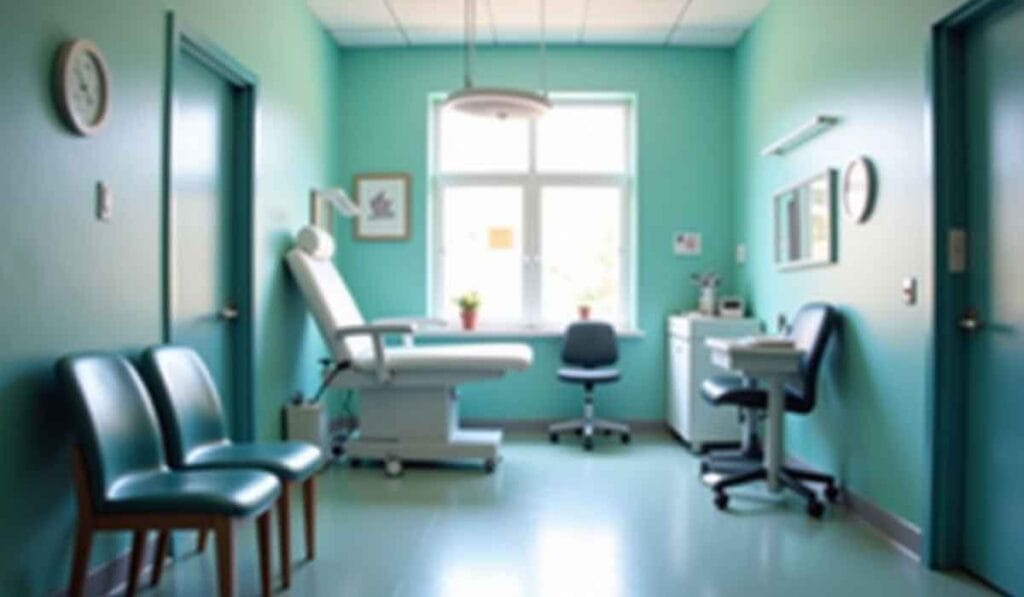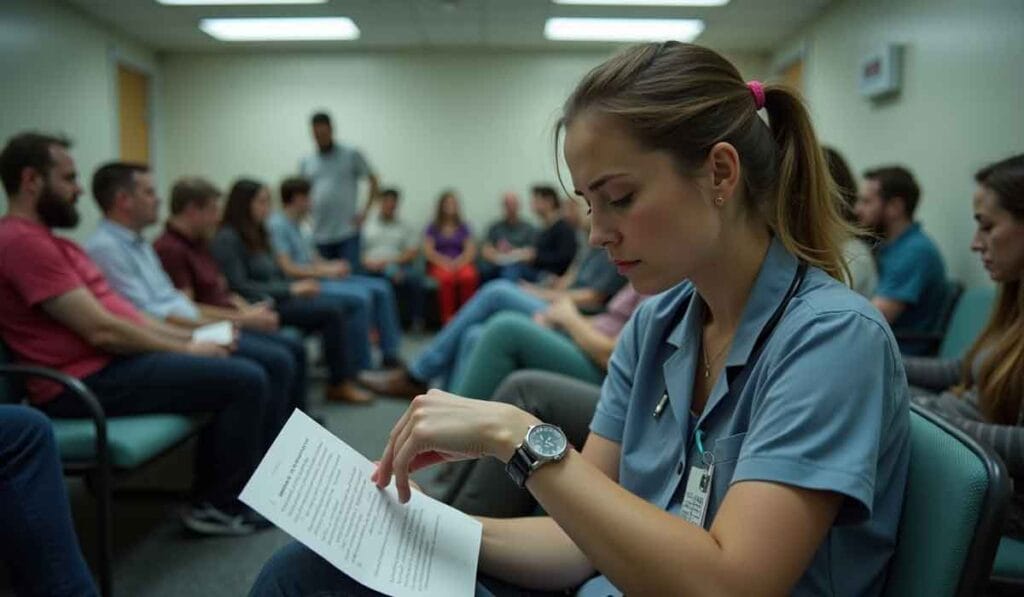How To Choose Between An Emergency Room Or Urgent Care After Car Accident
Getting medical attention after a car accident can be confusing.
You might wonder whether to go to an emergency room or urgent care.
Knowing the differences between these options helps you make the best choice for your injuries.
This guide answers your questions clearly and simply.
Please note: We are accident doctors who charge you $0 out of pocket for the best after car accident medical care.
Don’t get stuck with big medical bills after a car accident.
You should come in and get treated by us first, and then we can refer you to the best auto accident attorneys in Phoenix or Mesa.
Key Takeaways
- Choose the ER for severe injuries like internal bleeding and concussions. Urgent care works well for minor cuts, bruises, and sprains.
- ER Costs: $1,200 – $3,000+. Urgent Care Costs: $100 – $500. Insurance often covers more at urgent care.
- Expect longer waits at ERs (2-4 hours). Urgent care centers have shorter wait times (30 mins – 1 hour).
- Use urgent care for quick evaluations and less serious conditions to save time and money.
- Always prioritize your health when deciding where to go after a car accident.
Understanding the Differences: Urgent Care vs. Emergency Room
Emergency rooms and urgent care facilities serve different purposes. Emergency physicians handle severe trauma while urgent care centers address minor injuries.
Types of care provided

For instance, you can visit an urgent care center for sprains or minor lacerations.
Emergency departments provide immediate medical attention for severe injuries.
They address conditions like internal bleeding, broken bones, and heart attacks.
If you suspect a concussion or experience trouble breathing after a car accident, head to the ER right away.
Typical conditions treated

Urgent care clinics address non-life-threatening injuries. These include minor cuts, bruises, and sprains.
Doctors in such facilities can handle small bone fractures and whiplash injury from car accidents.
They perform quick medical evaluations, allowing you to get back on track fast.
Emergency rooms (ER) focus on severe conditions that need immediate attention.
Serious trauma, severe burns, or possible internal injuries fall into this category.
Symptoms like loss of consciousness or chest discomfort signal the need for ER care instantly.
Early treatment can prevent complications.
When to Choose Urgent Care After a Car Accident

Urgent care facilities are ideal for treating minor injuries after a car accident.
You will receive prompt attention for issues like scrapes and bruises without the long wait times of an emergency room.
Non-life-threatening injuries
Non-life-threatening injuries can often be treated at an urgent care facility.
These facilities handle conditions like minor cuts, bruises, and sprains resulting from a car accident.
You may also get quick medical evaluations without the long wait times seen in emergency rooms (ER).
Urgent cares are staffed with medical professionals who can provide stitches for minor wounds and prescribe medications for pain management or infection control.
They also offer diagnostic testing to check for less severe issues like fractures or contusions that don’t require immediate emergency treatment.
Minor burns and wounds

Minor burns and wounds often follow car accidents. Urgent care centers can treat these effectively.
The medical staff will clean your wound to prevent infection. They may apply a bandage or prescribe an antibiotic ointment.
Quick treatment minimizes scarring and speeds up healing. A visit to urgent care for minor injuries saves time and costs less than the emergency room (ER).
Quick medical evaluations

Urgent care centers offer quick medical evaluations for non-life-threatening injuries.
After a car accident, you can visit an urgent care center for issues like minor burns, scrapes, or bruises.
Trained professionals will assess your condition and provide the necessary treatment on the spot.
Such facilities often have shorter waiting times compared to emergency rooms.
This means faster service when addressing ailments that don’t require immediate emergency medical assistance.
Seeking timely help in these situations ensures proper documentation for insurance purposes and personal injury claims.
When to Opt for the Emergency Room
If you are experiencing severe pain or suspect internal injuries, head straight to the emergency room. Emergency care is crucial if symptoms of a concussion or other serious conditions arise.
Severe injuries requiring immediate attention

Severe injuries demand immediate attention in an emergency room. Life-threatening conditions like brain injury, severe blood loss, and broken bones need urgent care from trauma surgeons.
Paramedics or emergency responders may use ambulances to transport patients swiftly for quick medical intervention.
Symptoms of internal injuries are equally critical. Possible signs include low blood pressure, fainting, or blood in stool.
Emergency rooms have the necessary equipment such as CT scans to diagnose these issues rapidly.
Delaying treatment can worsen the situation or lead to serious complications like shock or organ failure. Always seek prompt care in such cases.
Possible internal injuries
If your abdomen feels tender or swollen, it’s a red flag.
Brain damage is another concern. Symptoms like headache, nausea, or dizziness may point to brain trauma.
Visit an emergency room if you notice these signs. Quick action can prevent long-term damage and help recover faster from motor vehicle accidents.
Symptoms of concussion or other serious conditions

Symptoms of concussion come in various forms. You may feel dizzy or experience headaches.
Vomiting and nausea are common signs too. Confusion or memory loss can also occur after a car collision.
Other serious conditions show different symptoms. For instance, internal injuries might cause severe abdominal pain or difficulty breathing. Blood in the urine could indicate organ damage.
Always seek medical care for these symptoms to ensure proper auto accident treatment.
Cost and Waiting Time Considerations
Comparing the cost and waiting times between an ER and urgent care can help you decide which option is better after a crash.
Cost comparison between ER and urgent care

Cost plays a crucial role when deciding between an Emergency Room (ER) and Urgent Care after a car accident.
Here is a comparative look.
| Service | Average Cost |
|---|---|
| Emergency Room (ER) | $1,200 – $3,000+ |
| Urgent Care | $100 – $500 |
– ER visits are generally more expensive.
– Urgent care is more budget-friendly.
– Insurance may cover a larger portion of urgent care costs.
– ER provides specialized services, justifying higher costs.
– You may encounter hidden fees in ER bills.
Expected waiting times
Transitioning from a comparison of costs, it’s crucial to understand the expected waiting times for medical care after a car accident.
The time you wait for treatment can vary significantly between an ER and urgent care.
| Facility | Average Waiting Time | Factors Affecting Wait Time |
|---|---|---|
| Emergency Room | 2-4 Hours | Severity of other cases, hospital capacity, time of day |
| Urgent Care | 30 mins – 1 Hour | Number of patients, staffing levels, time of day |
In emergency rooms, the time you wait often depends on the severity of other patients’ conditions.
High-priority cases take precedence. Hospital capacity and the time of day you visit can also impact how long you wait.
Urgent care centers usually have shorter waiting times. Factors like the number of patients, staffing, and time of day affect these waits.
You can typically expect a faster service for non-life-threatening injuries.
Understanding these differences helps you determine the best choice for your medical needs post-accident.
Conclusion

Choosing between an emergency room and urgent care after a car accident depends on your injuries.
For severe trauma or possible internal issues, go to the ER right away. Urgent care is best for minor wounds that need quick treatment.
Always consider cost and wait times too. Your health should come first in every decision you make.
FAQs
1. When should I go to the emergency room after a car accident?
Go to the emergency room if you have severe injuries like traumatic brain injury, head injuries, or back injuries such as herniated disks. Emergency rooms are equipped for immediate surgery and complex medical conditions.
2. What types of injuries can be treated at urgent care after a crash?
Urgent care centers handle minor injuries and physical examinations. They can treat less severe back pain, cuts that need stitches but not surgery, and other non-life-threatening conditions.
3. How does health insurance affect my decision between an ER and urgent care?
Health insurance policies often cover both options but with different co-pays. Check your personal injury protection plan to understand what is covered for each type of facility.
4. Can I see my primary care physician after a car accident instead of going to the ER or urgent care?
Yes, if your injuries are minor, seeing your primary care physician or using telemedicine might be sufficient for follow-up visits or ongoing disease control.
5. Should I consult personal injury lawyers after visiting an ER or urgent care?
Consulting personal injury lawyers can help you navigate personal injury law related to crashes and mass tort claims. They offer advice on legal steps following treatment for any medical condition resulting from accidents.

